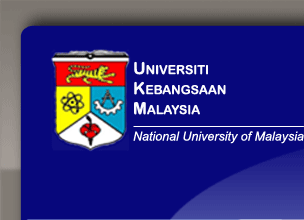



References
Ab Aziz Yusof. 2002. Pengurusan sumber manusia: Konsep, isu dan pelaksanaan.
Edisi kedua. Malaysia: Prentice Hall.
Anon. 1998. Dua cabaran utama MSC. Utusan Malaysia (online). 20 September. [4
Mei 2006].
Anon. 2000. Pendidikan bidang teknologi perlu dikaji semula. Utusan Malaysia
(online). 27 Ogos. [4 Mei 2006].
Anon. 2002. Pekerja diminta jadikan pembelajaran amalan sepanjang hayat. Utusan
Malaysia (online). 30 April. http://www.cnn.com/2000/TECH/computing/09/07/
malaysia.reut/
Anon. 2005. 60,000 grads unemployed. New Straits Times (online). 2 November. [4
Mei 2006].
Anon. 2006. Kandungan digital: RM150 juta disediakan. Utusan Malaysia (online). 1
April. [4 Mei 2006].
Anon. 2006. MSC Malaysia suntik semangat baru ICT. Utusan Malaysia (online). 7
April. [4 Mei 2006].
Anuwar Ali, Nor Aini H.I & Hasnah A. 1998. Persejagatan dan pembangunan
industri di Malaysia. Bangi: Penerbit UKM.
Balakrishnan P. 2000. Mengurus sumber manusia dalam syarikat multinasional:
Pengambilan pegawai dagang dan pegawai tempatan. Dewan Ekonomi.
November: 27-28.
Barclay, J.M. 1993. Making the ‘right’ choice: Some considerations of the ethics of
selection at the workplace. Recruitment, Selection & Retention 2(3): 17-22.
Bragg T. 1999. Information tech labor shortage threatens business bottom line.
Hudson Valley Business Journal 9(21): 18-19.
Computerworld. 1997/1998. The IT workforce. January 26, 1998, 89.
Dowling et.al. 1994. Mengurus sumber manusia dalam syarikat multinasional:
Pengambilan pegawai dagang & pegawai tempatan. Balakrishnan P. 2000.
Dewan Ekonomi, November: 27-28.
Dyer, L. 1982. Human resource planning. In Personnel Management. Rowland, K.M.
& Ferris, G.R. (Eds): 52-78.
Greer, C.R. & Armstrong, D. 1980. Human resource forecasting and planning: A
state-of-the-art investigation. Human Resource Planning 3(2): 67-78.
Gibson A. 1999. Hot jobs in information technology. Career World 27(5): 29-32.
Hilton M. 2001. IT workers in the new economy. Monthly Labor Review 124(6):41-
46.
Kahalas, H., Pazer, H.L., Hoagland, J.S. & Levitt, A. 1980. Human resource planning
activities in US firms. Human Resource Planning 3(2): 53-66.
Ivancevich, J. & Lee, S.H. 2002. Human Resource Management in Asia. McGraw-
Hill.
Kanapathy, K. & Jabnoun, N. 1998. Are ISO 9000 and TQM programmes paying off
for Malaysian manufacturing companies? Malaysian Management Review 33(2):
40-46.
Kao, C. 1998. Demand for industrial management manpower in Taiwan: Viewpoints
of quantity and skill. International Journal of Manpower 19(8): 592-602.Sarachek, B. & Aziz, A.H. 1983, A survey of Malaysian personnel practices and
problems. Jurnal Pengurusan 2: 61-79.
Sekaran, U. 1992. Research methods for business: A skill-building approach. 2nd ed.
New York: John Wiley & Sons.
Stam, M. & Molleman, E. 1999. Matching the demand for and supply of IT
professionals: Towards a learning organization. International Journal of Manpower
20(6): 375-387.
Sumali Amat. 2001. IT human resource planning for the Malaysian Public Sector.
Persidangan Pembangunan Sumber Manusia Dalam Era K-Ekonomi.
Sumi M. 2006. Graduan ICT, pentadbiran perniagaan paling ramai menganggur.
Utusan Malaysia (online). 6 Februari. 4 Mei 2006].
Tharsikin Insa. 2005. eBizzAsia –Viewpoint: Refleksi. III(25). [26 April 2006]. http:/
/www.ebizzasia.com/0323- 2005/viewpoint,0323.html.
Usherwood, Bob et. 9l. 2000. Recruitment and retention in the public library – a
baseline study. Library Management 21(2): 62–80.
Zafir, K.M.M. & Noor Azuan Hashim. 2000. Amalan pengambilan dan pemilihan
pekerja ke arah organisasi berdaya saing. Prosiding Seminar Pengurusan Alaf
Baru. Jilid I: 11-33
 |
 |

|
 |